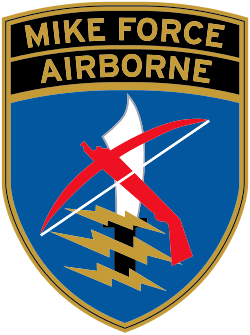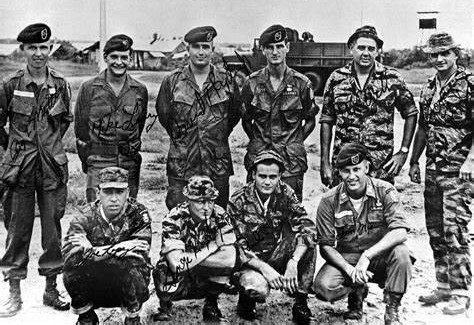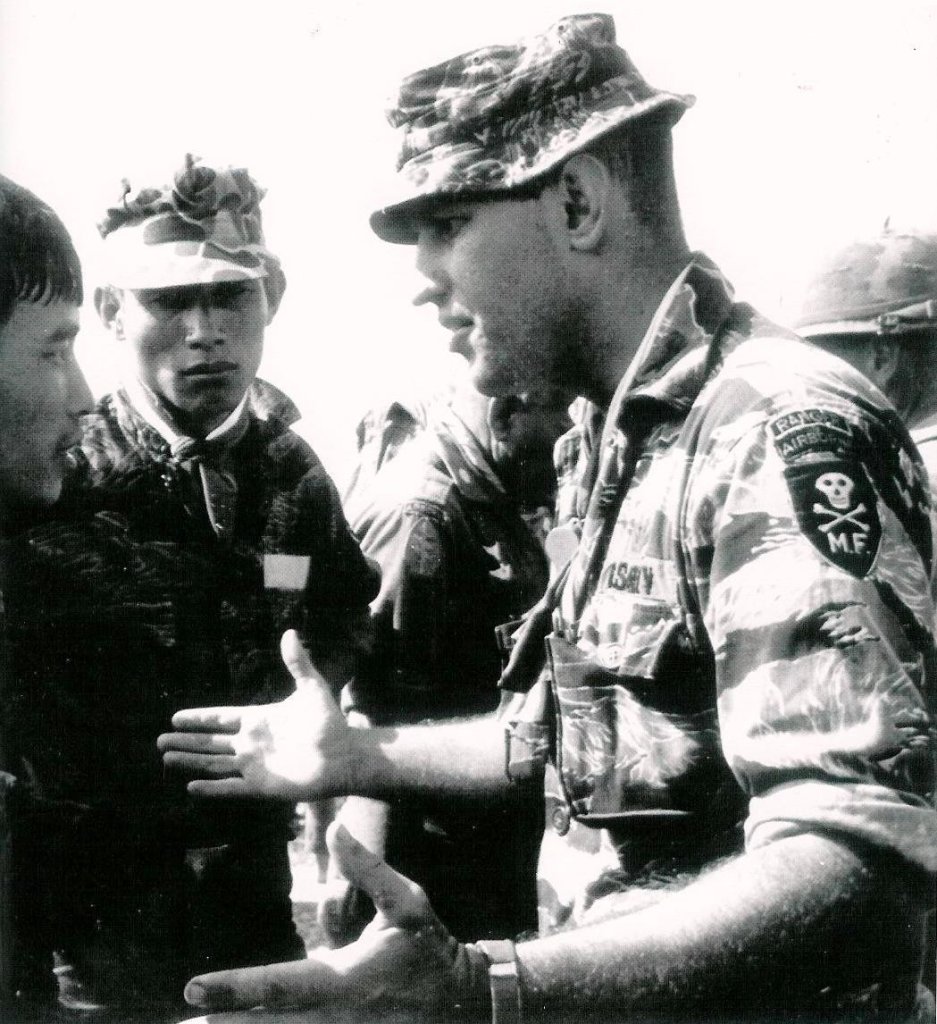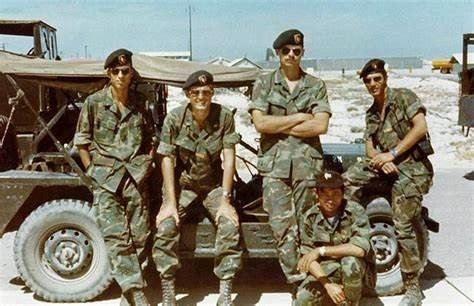MIKE Force: The Spearpoint of Unconventional War in Vietnam
They were the shadow reinforcements—the warriors who arrived when no one else could. Trained to strike fast, fight hard, and vanish into the jungle, MIKE Force was the spearpoint of Special Forces in Vietnam.
May 9, 2025

 Mobile Strike Force Command (MIKE Force)
Mobile Strike Force Command (MIKE Force)
Nickname: MIKE Force
Active: 1965–1971
Parent Unit: 5th Special Forces Group (Airborne), U.S. Army
Theater: Republic of Vietnam (South Vietnam)
Purpose and Strategic Role
The Mobile Strike Force Command — or MIKE Force — was a rapid-reaction, counterinsurgency unit created by U.S. Army Special Forces (Green Berets) to reinforce and support Civilian Irregular Defense Group (CIDG) camps in the remote highlands of South Vietnam.
Their key missions included:
-
Emergency reaction force to relieve CIDG camps under siege.
-
Search and destroy missions in VC/NVA-dominated territory.
-
Reconnaissance in force to locate and disrupt enemy units.
-
Mobile reserve force for each Corps Tactical Zone (CTZ) under the U.S. command structure.
-
Training and force multiplication, working alongside and leading indigenous fighters.
Unit Composition
Each MIKE Force was organized regionally under four different commands, corresponding to the four Corps Tactical Zones of Vietnam:
-
I Corps: Based at Da Nang
-
II Corps: Based at Pleiku
-
III Corps: Based at Bien Hoa
-
IV Corps: Based at Can Tho
Each Force was composed of:
-
A small cadre of U.S. Army Special Forces NCOs and officers (usually 12–20 per battalion)
-
A large number of indigenous troops, including:
-
Montagnards (in II and I Corps)
-
Nungs (ethnic Chinese-Vietnamese mercenaries, especially in III Corps)
-
Khmer Krom (ethnic Cambodians, in IV Corps)
-
Cambodians and Lao tribesmen, in special cases
-
A typical MIKE Force company consisted of:
-
150–200 irregulars led by 4–6 Green Berets
-
Light mortars, heavy machine guns, recoilless rifles, and assault rifles
-
Highly mobile and air-lift capable (helicopter-inserted)
Each Corps command could field a battalion-sized reaction force with the ability to deploy quickly anywhere in the region.
 Overview and Purpose
Overview and Purpose
The Mobile Strike Force Command, known more commonly as MIKE Force, was one of the most unique and dynamic units of the Vietnam War. Formed under the command of the 5th Special Forces Group (Airborne), MIKE Force was created to act as a highly mobile, rapid-response unit capable of reinforcing remote outposts, countering enemy offensives, and conducting aggressive search-and-destroy operations in Viet Cong and North Vietnamese Army (NVA)-held territory. These elite units were designed to work closely with the Civilian Irregular Defense Group (CIDG) camps in South Vietnam, offering them the ability to call on a hard-hitting, air-mobile strike force when under threat.
Organization and Composition
MIKE Forces were divided regionally, with battalions based in each of the four Corps Tactical Zones (CTZ) of South Vietnam. I Corps was headquartered in Da Nang, II Corps in Pleiku, III Corps in Bien Hoa, and IV Corps in Can Tho. Each regional MIKE Force battalion was composed of a small core of U.S. Army Special Forces soldiers, typically 12 to 20 men, and a much larger body of indigenous irregulars. These indigenous troops included Montagnards in the Central Highlands, Nungs (ethnic Chinese-Vietnamese) in III Corps, Khmer Krom in the Mekong Delta, and other tribal groups who had longstanding enmity with the communists.
Each MIKE Force company typically numbered 150 to 200 men, commanded by a handful of Green Berets. They were equipped with mortars, recoilless rifles, automatic weapons, and were trained to deploy rapidly via helicopters or fixed-wing aircraft. These units were capable of independent operations and often operated deep in hostile territory, far from regular friendly support.
 Operational Capabilities and Tactics
Operational Capabilities and Tactics
The core strength of MIKE Force was its ability to react with speed and precision. These units could be deployed within hours to reinforce a besieged camp, pursue an enemy element, or strike a target identified through reconnaissance or intelligence. Their missions often included reconnaissance-in-force, direct assaults on entrenched positions, emergency extractions, downed pilot recovery, and the seizure of enemy supply depots or base camps.
Tactically, MIKE Force operated using small-unit jungle warfare doctrine refined by years of Green Beret experience. They frequently conducted air-mobile insertions, often under fire, followed by rapid assaults designed to overwhelm enemy forces. They were also well-versed in ambush tactics, demolitions, and counter-ambush drills. Unlike conventional units, MIKE Force troops often lived and moved like guerrillas, understanding the terrain and utilizing the knowledge of their tribal counterparts to outmaneuver the enemy.
Combat History and Key Engagements
Throughout their operational period from 1965 to 1971, MIKE Force units were involved in some of the most intense fighting of the war. They played critical roles in battles such as the defense of Plei Me in 1965, the relief of Dak Pek and Bu Prang, and the bloody siege at Lang Vei during the Tet Offensive in 1968. These missions were often carried out under heavy fire and in isolated regions where conventional reinforcements could not reach in time.
MIKE Force teams also conducted cross-border reconnaissance and interdiction missions, sometimes operating in Cambodia and Laos under joint Special Forces and CIA programs. While much of their work remained classified for decades, their contribution to disrupting the enemy’s supply lines and rear area operations was significant.
 Leadership, Training, and Culture
Leadership, Training, and Culture
Each MIKE Force unit was led by experienced Green Berets who not only commanded but lived alongside their indigenous troops. These relationships were vital, as mutual trust was essential in combat situations where language, culture, and loyalty could mean the difference between life and death. The Green Berets trained their units in all aspects of modern warfare—ranging from first aid and navigation to advanced weapons handling and small-unit tactics.
The force operated with an unusual degree of autonomy, and its culture was a blend of tribal loyalty, Special Forces professionalism, and the realities of jungle warfare. Many MIKE Force commanders were given wide discretion to plan and execute missions in the field, a reflection of the decentralized nature of Special Forces doctrine.
Disbandment and Legacy
As U.S. involvement in Vietnam began to wind down and the policy of “Vietnamization” took hold, MIKE Force units were gradually deactivated. By 1971, most had been disbanded and their missions turned over to the Army of the Republic of Vietnam (ARVN) and its Ranger units. The withdrawal of American support left many of the indigenous soldiers, particularly the Montagnards, exposed to enemy reprisals and persecution.
Despite the lack of formal recognition at the time, MIKE Force left a lasting legacy on U.S. special operations doctrine. Their experience in irregular warfare, counterinsurgency, and working with indigenous allies laid the foundation for later Special Forces missions in Central America, the Middle East, and Afghanistan. The Mobile Strike Force proved that small, agile, culturally-attuned units could have a strategic impact far greater than their numbers would suggest.
 Mobile Strike Force Command (MIKE Force)
Mobile Strike Force Command (MIKE Force) Overview and Purpose
Overview and Purpose Operational Capabilities and Tactics
Operational Capabilities and Tactics Leadership, Training, and Culture
Leadership, Training, and Culture